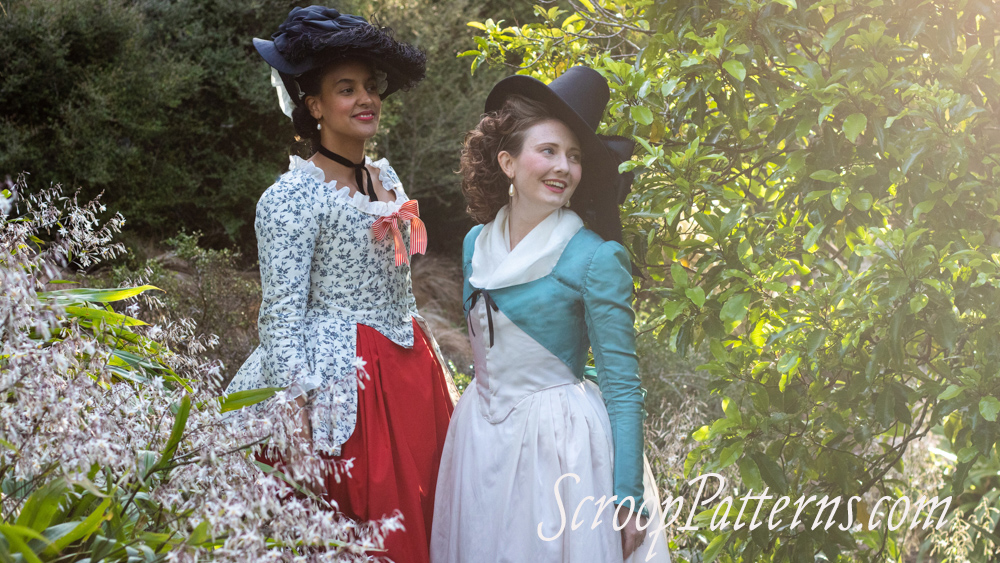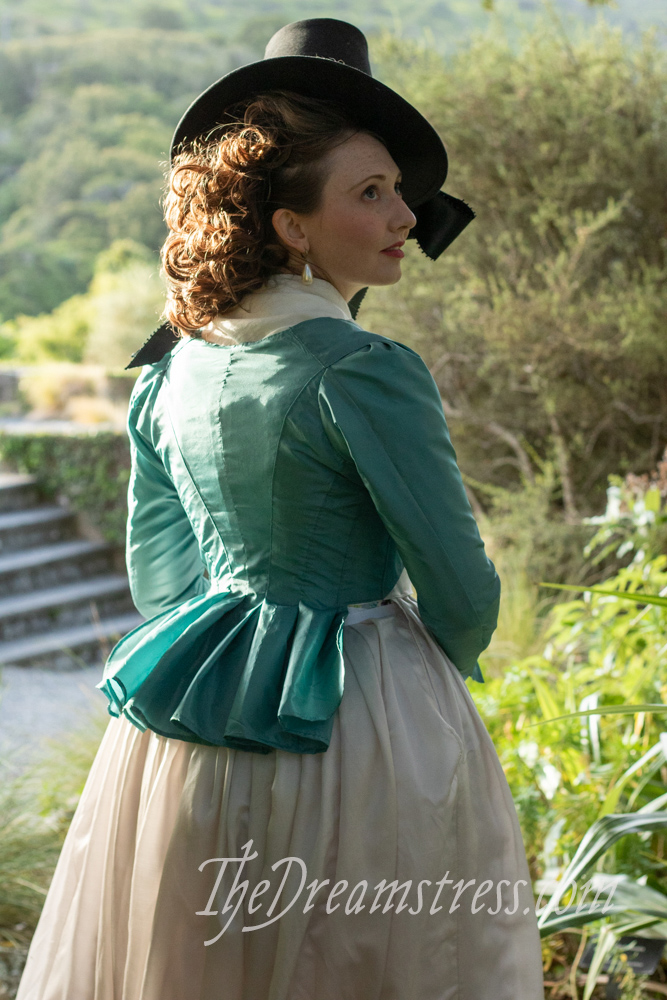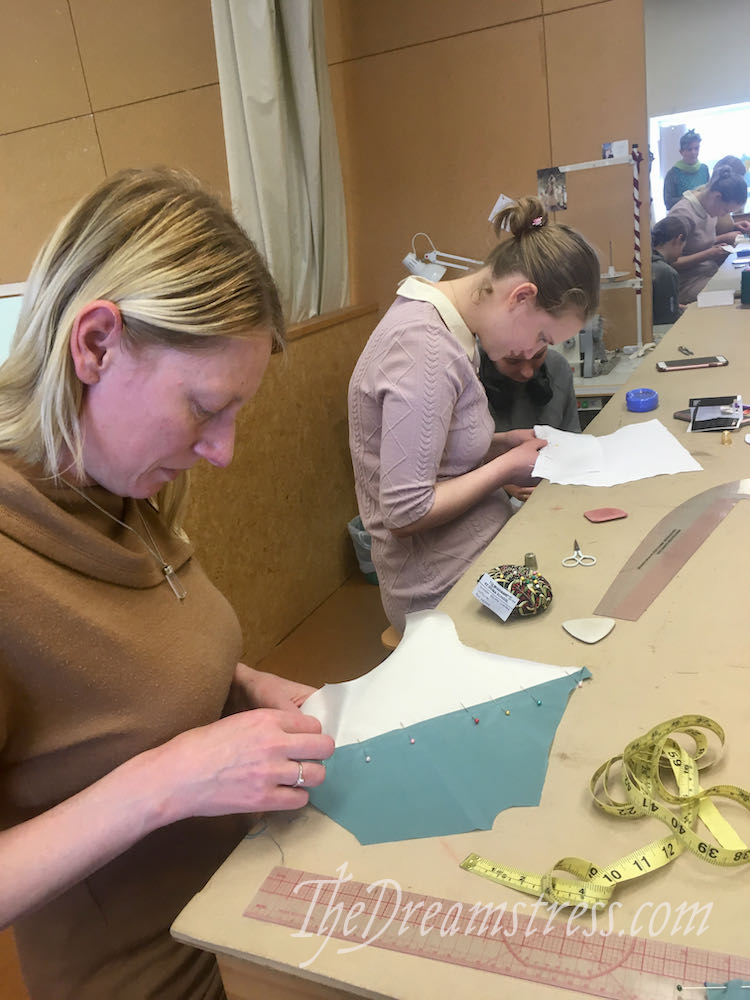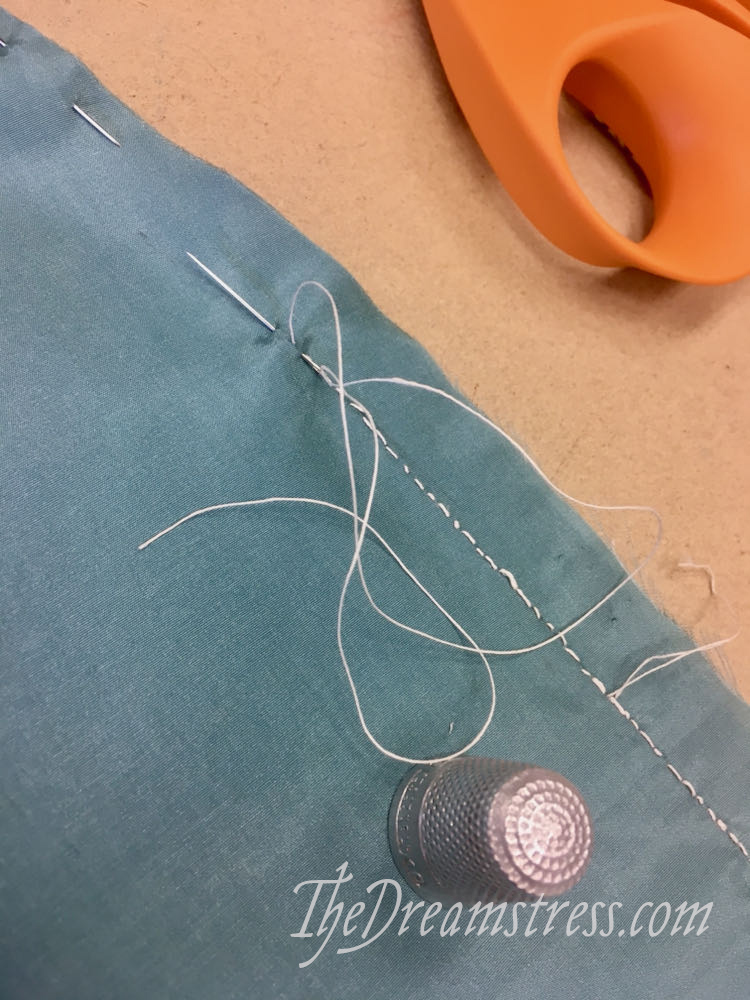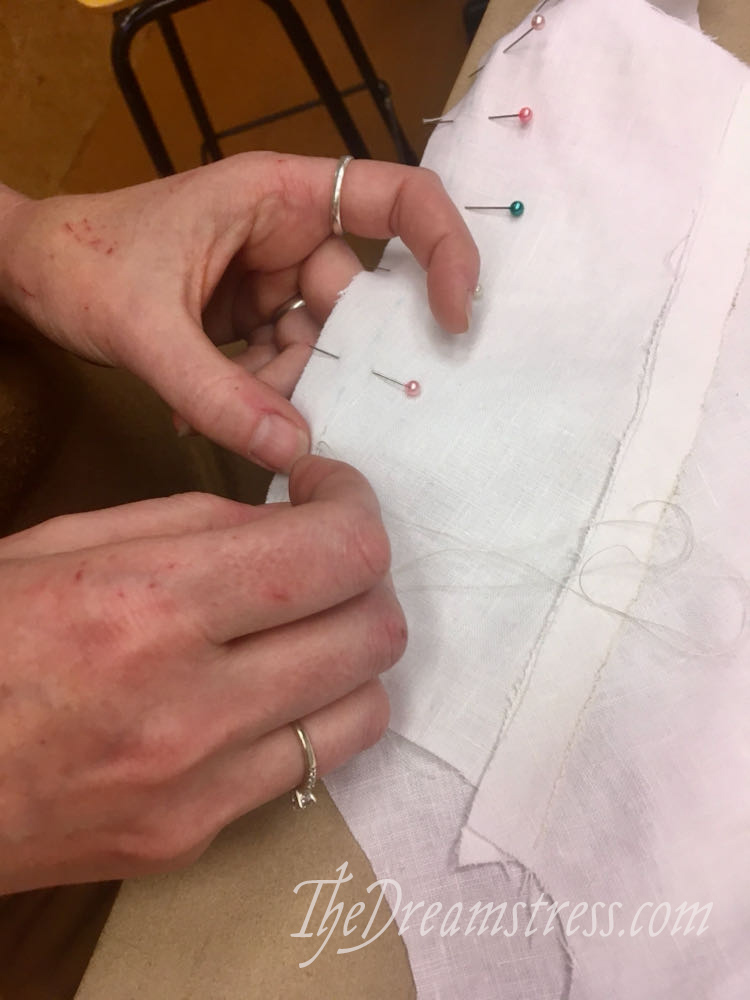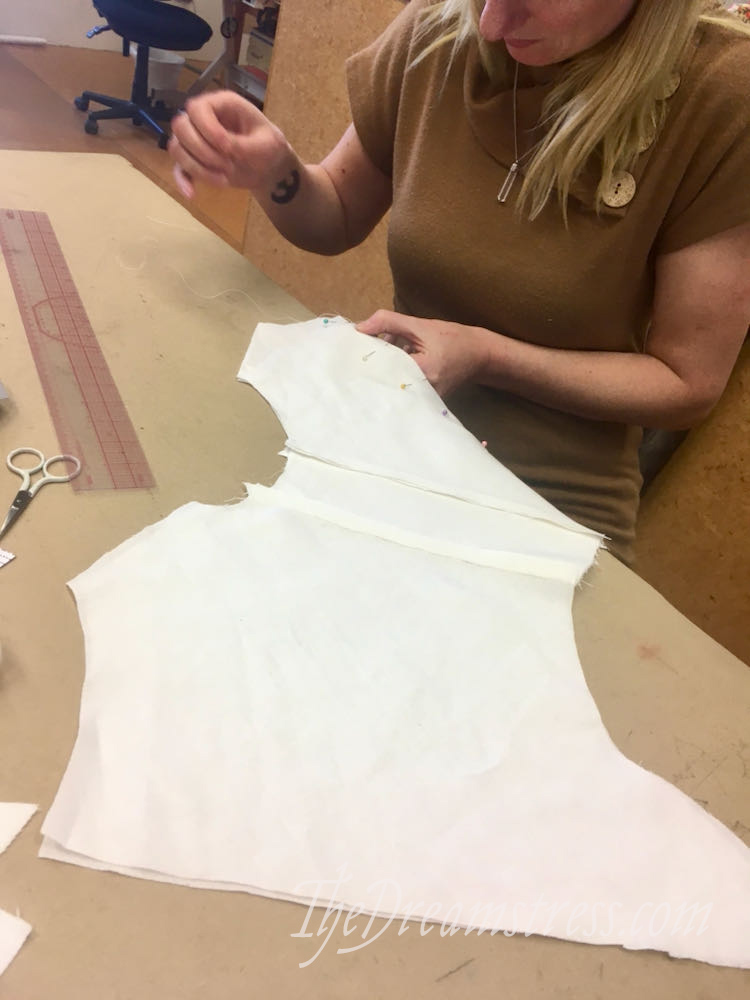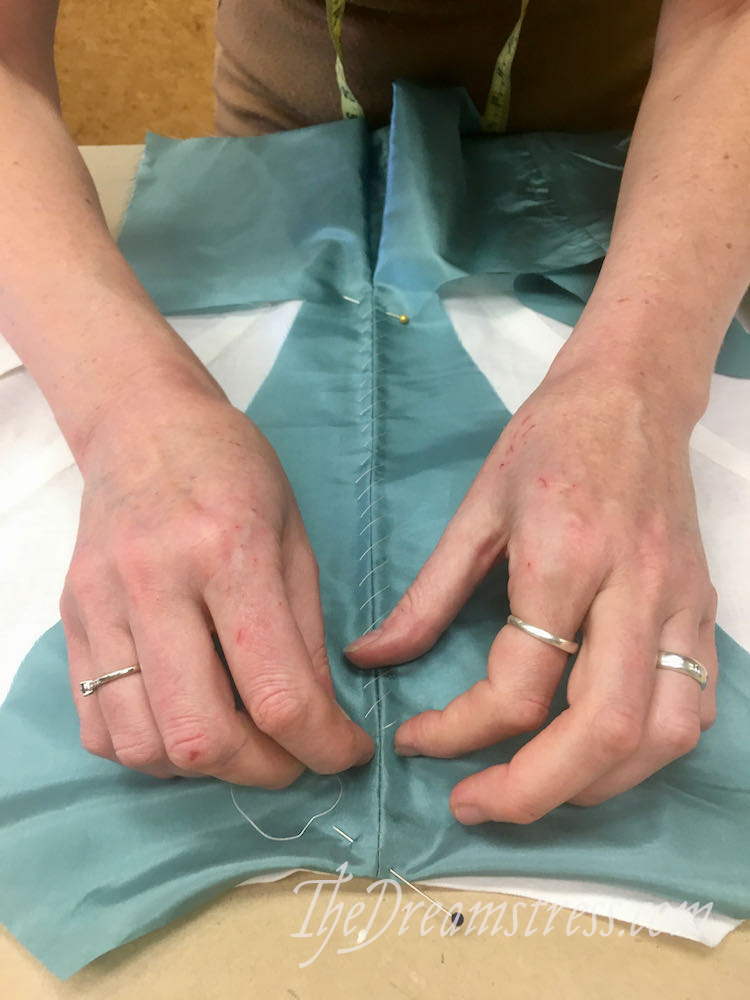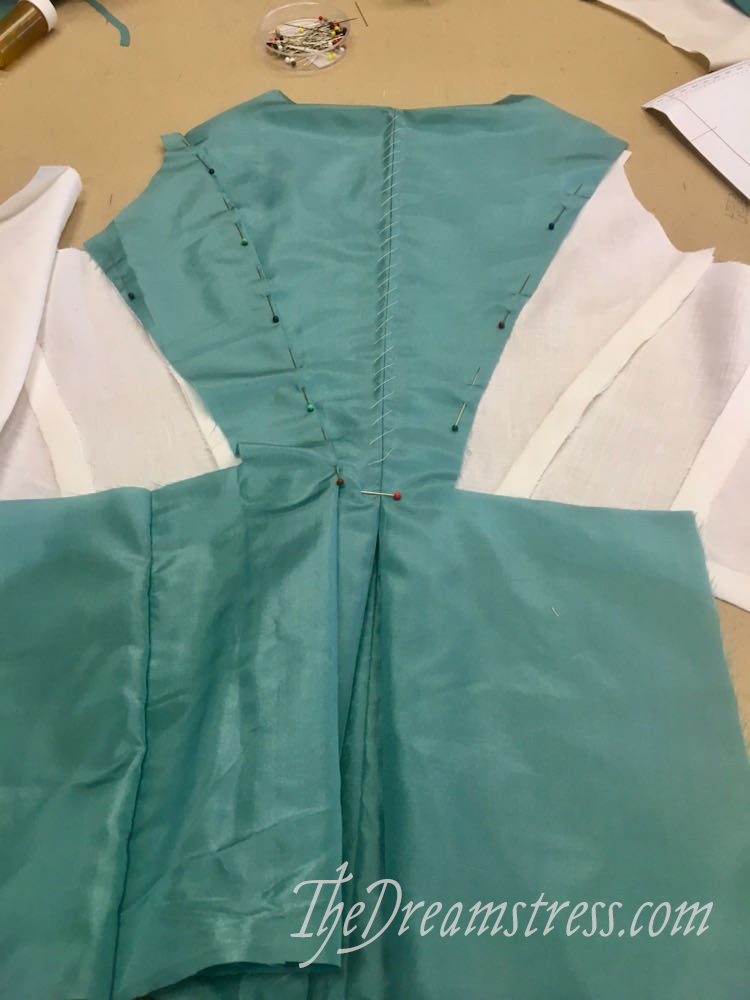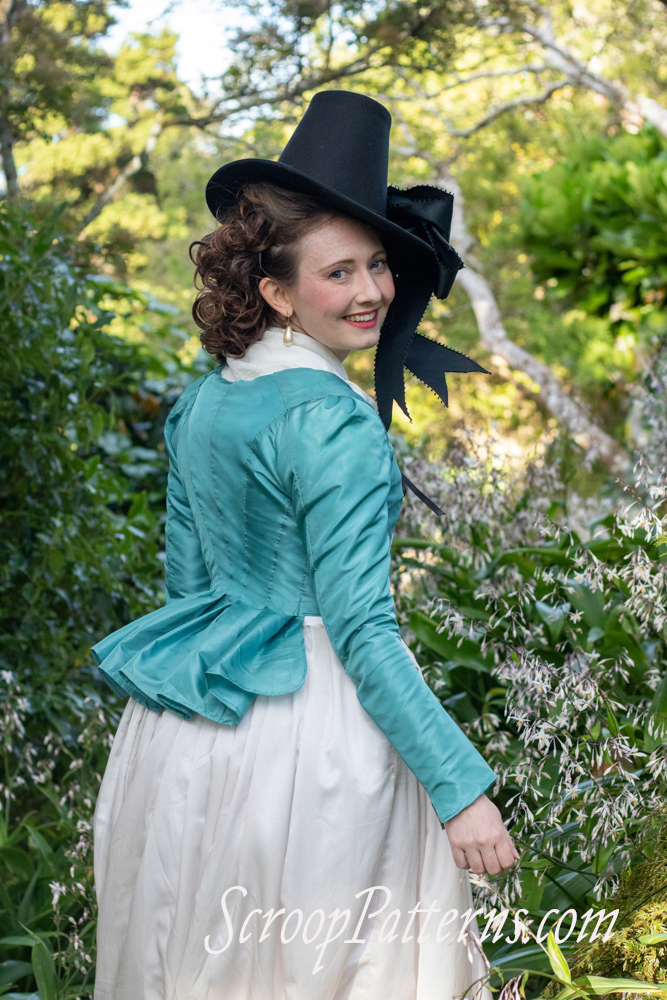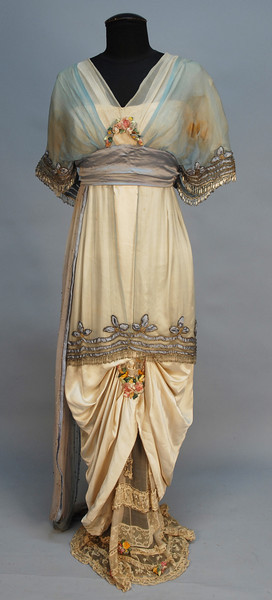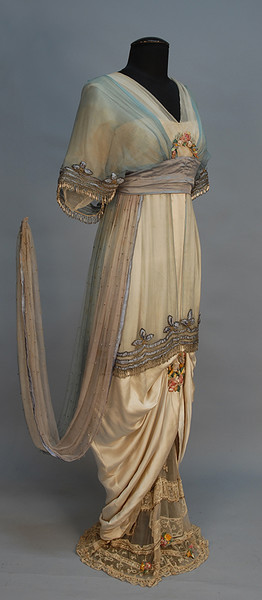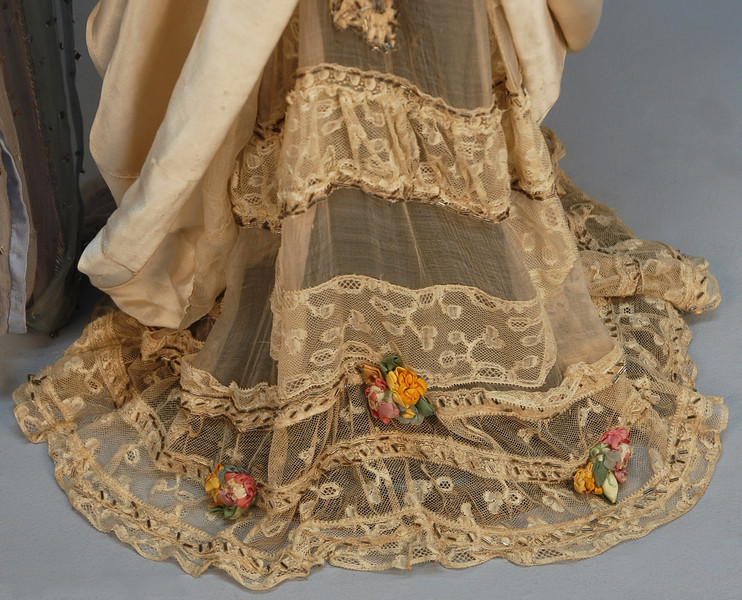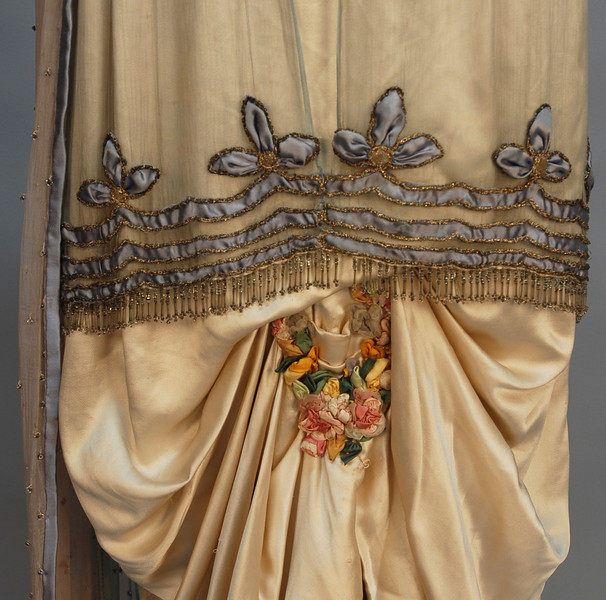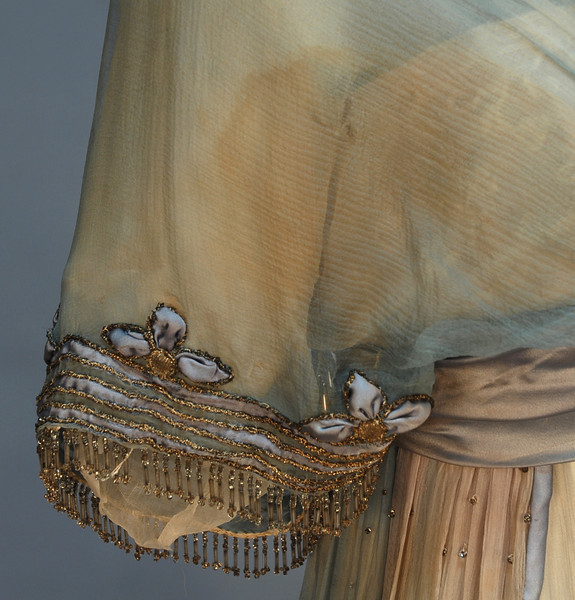This week’s 1810s Rate the Dress has been on my list for a long time. It’s just taken it a while for it to work its way up to the top at the right time! I think it’s such an interesting garment, from an interesting period in fashion history: the late 1810s played with so many fascinating design features. What will you make of it?
This post owes a dept of gratitude to my friend Averil for making sure my interpretation of the museum’s catalogue record was accurate. My French is entirely limited to ‘I know the names of all the garments and fabrics’, which means figuring out the subtleties of museum records (which can be a mystery even in your native language) is always a bit tricky.
Last Week: A Lucile evening dress in tulle, lace and satin
I really wasn’t sure how you’d like last week’s dress. Stained and worn garments, even when they are ideally presented, always accrue a bit of criticism – and this one wasn’t even perfectly pressed and staged. This time though, no one complained about the wear. Those of you that mentioned it felt it contributed to the dresses story: sweat meant she must have danced a storm!
Most of you loved it. If you didn’t, it was because it felt a little bitsy, with too many unrelated elements. The roses and lace underskirt came in for the most criticism.
I do think the rating suffered as a result of the presentation: the lace underskirt was probably meant to clear the ground at front. The too-short mannequin made the dress look oddly squat, and the lace underskirt look like an afterthought. On a taller form it would have looked more purposeful.
The Total: 9.1 out of 10
Oooh, breaking the nine barrier! Pretty good for a dress in that condition. Well done Lucile!
This week: Pink roller prints and lots of frills
Unlike last week’s dress, this week’s garment is so pristine it looks unworn. There’s two small spots on the skirt if you look very, very closely, and the suggestion of fading, but they are both extremely minor.
Like last week’s dress I think it’s suffering from a too-short mannequin. Late 1810s daywear clears the ground, rather than trailing on it. So imagine this just two inches further off the floor, with a pair of neat leather clad toes peeping out from underneath it!
Both appearance and the catalogue rating suggest its a matching dress and spencer bodice (similar to this ensemble we rated back in 2019). Interestingly it looks like the spencer may be short sleeves, with the short ruffly oversleeves part of the spencer, and the long sleeves the dress itself, although, like the John Bright dress and spencer, both could have long sleeves.
Note that the colours are slightly lighter in the skirt and sleeves, as though the dress got more use and display, and faded slightly. It’s also possible it’s a trick of the layers of fabric over each other looking darker.
Averil and I did have an extensive discussion over whether it could be a petticoat and spencer, or the dress and chemisette, or a long sleeved spencer, but we think we’ve got this right between her French and my museum/fashion experience!
I think this ensemble is a couple of years earlier than the museum’s dating. The simpler hem trim, over-long sleeves which wrinkle at the lower arm, heavily gathered back skirt pleating, bodice gathering down to the waist, upper sleeve trim, and short spencer bodice are all more consistent with what is seen in fashion plates in 1812-16 than the fashions of 1818-20 (and this dress is too a la mode to suggest someone making a purposefully outdated style). Note how much stiffer the silhouette, and how much more elaborate the trim is, in the dress from the John Bright collection I linked above.
My initial assumption was that the fabric of this dress would be a small floral, but up close it’s little branched loops, almost like some seaweeds. 1810s-40s fabric in particular is often incredibly inventive and wacky, and seaweed-esque motifs were common. Assembling ‘seaweed albums’ was a popular hobby from at least the 1820s onwards.
One fun little detail I noticed while studying the dress was the ruffle trim. The ruffles are gathered over a cord, rather than being whipped or stroke gathered. We have a late 1820s dress at Toi Whakaari that features similar cord gathered ruffles.
So what do you think of this ensemble? Perfectly proportioned pink and ruffles, or twee?
Rate the Dress on a Scale of 1 to 10
A reminder about rating — feel free to be critical if you don’t like a thing, but make sure that your comments aren’t actually insulting to those who do like a garment. Phrase criticism as your opinion, rather than a flat fact. Our different tastes are what make Rate the Dress so interesting. It’s no fun when a comment implies that anyone who doesn’t agree with it, or who would wear a garment, is totally lacking in taste.
(as usual, nothing more complicated than a .5. I also hugely appreciate it if you only do one rating, and set it on a line at the very end of your comment, so I can find it! And 0 is not on a scale of 1 to 10. Thanks in advance!)








